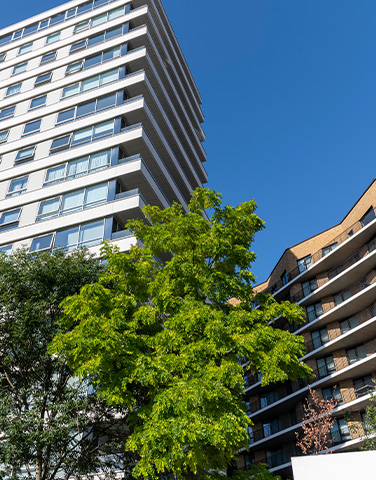
Mixing things up: how might the introduction of commonhold affect mixed-use development?
As noted in Commonhold: A new era for homeownership?, on 3 March this year, The Ministry of Housing, Communities & Local Government’s white paper on commonhold (published on 3 March 2025) put forward the government’s plans for reforming the ownership of property in the United Kingdom and in particular replacing leasehold tenure with commonhold.
The government has indicated the updated framework will be contained in draft legislation for pre-legislative scrutiny expected later this year and following the conclusion of that scrutiny the government intends to bring forward a Bill to implement the revised commonhold model.
The white paper promises that the government will continue to work with industry and consumer groups to ensure that developers, lenders, and property professionals are prepared for commonhold to become the new standard tenure of property ownership. To date there has been a low take up of commonhold schemes, it will be vitally important to get support from all stakeholders particularly lenders to the new plans.
We know from the white paper that the government intends to ban new leasehold flats and replace the leasehold ownership structure with commonhold as the default tenure; meaning flat owners will become commonhold unit owners.
Whilst a lot of the commentary surrounding the white paper has rightly been focused on the impact that it will have on the residential market, it also makes proposals to cater for mixed-use developments.
What is a mixed-use development?
In the white paper, “mixed-use developments” are defined as developments with a mix of commercial (such as shops or offices) and residential uses (such as for homeownership or rent).
The proposals – “sections” and “separate heads of costs”
The white paper confirmed the government’s decision to modify the current commonhold tenure to allow for the creation of “sections” to separate out different interests within the same commonhold. The idea being that sections would stop the necessity and cost of setting up separate commonholds within the same scheme.
For example, it will be possible to have a commercial section committee and a residential section committee within the same building or estate. The “section” structure would separate out the management of the different areas or groups of units. Where used, section committees would allow only the unit owners within a particular section to vote on matters solely affecting that section, and only those who benefit from a particular service or upgrade would be responsible for paying towards it. The example given in the white paper, is a mixed-use block, where a floor of retail or office units that does not use the same facilities as the flats above them can be a separate section from the flats.
The aim of the reforms being considered are to give developers the flexibility to design commonhold sites and decision-making within them and to account for the full spectrum of how different parts of buildings and different buildings on a larger site, can fit together. The government expects the establishment of sections to be largely considered at the outset during the planning and construction phases of the commonhold.
Further, the white paper sets out the proposals for allowing the compartmentalisation of decision making. This will allow developers and commonhold associations to allocate certain costs, and decision making over those costs to the relevant sections. So, by way of example, if a group of retail units uses a loading bay, they would be responsible for paying for its upkeep and those whose units do not have access will not be expected to contribute.
Potential issues
Whilst the above seems broadly sensible, there are elements of the proposals which need further thought and may cause problems down the line:
- Who has ultimate control?
- the system would allow separate sections to be combined by a vote of the commonhold association;
- the commonhold association sits above the section committees and can decide whether to delegate powers to the committees or revoke or alter the section committees’ powers. This could lead to disputes.
- Representation – it is not clear how different “sections” in the commonhold scheme would be represented on the commonhold association.
- The current leasehold scheme – perhaps more importantly, it is not known how the Government intends to implement the new commonhold schemes with existing leasehold buildings already built and operating.
We will know more when the government’s Bill is brought forward later this year. In the meantime, you can take a look at our leasehold reform hub for further information and commentary around the major leasehold reforms.
How we can help
Our residential estates team and commercial real estate teams advise landlord and leaseholders on all aspects of residential leasehold and commercial leasehold property. If you would like further guidance on statutory reforms or any other aspect of this complex area of law, please get in touch.
Talk to us about
Related services





 Download PDF
Download PDF










